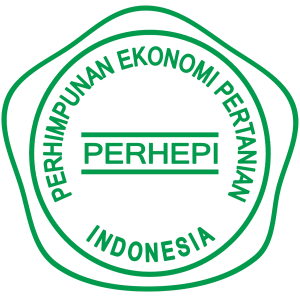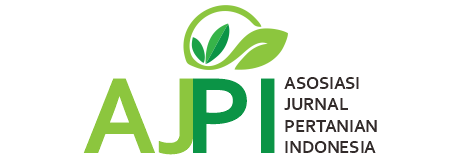Circular Economy Based City Park Management Model in Surabaya Indonesia
DOI:
https://doi.org/10.55173/agriscience.v9i1.181Keywords:
Circular economy, management, city park, BiomassaAbstract
Maintaining a green, clean, beautiful, and lush city park through the year requires sustainable management, which includes maintenance like watering, pruning, trimming, and rejuvenation, as well as the creation of new parks. This study aims to identify the factors that influence the successful management of city parks in Surabaya and to understand the organic material cycle involved in managing these parks. This study used qualitative descriptive method. Data were collected through interviews with park management personnel, documentation from various city government policies, and field observations related to park management activities. Data were analysed using triangulation methods. Trees and city parks need regular care, such as pruning and trimming, to provide optimal benefits. Pruning waste, along with other organic waste, is composted at composting facilities or recycling centers widely available in Surabaya. The cyclical management of organic waste from city parks impacts the growth and development of Surabaya's parks while simultaneously solve the problem of organic waste produced by city communities.Although many studies discuss urban green space and waste management in Surabaya, specific research mapping the biomass cycle and circular economy framework in city park management is still limited. Therefore, this study aims to fill that research gap by exploring how circular economy principles are implemented in the Surabaya city park management system.
References
Al Amin, M. N. F., Fitrie, R. A., and Safira, A. (2023). Collaborative Governance inWaste Management: A Study from Surabaya Smart City Programme. IOP Conf. Series: Earth and Environmental Science 1275 (2023) 01(2035). https://doi.org/10.1088/1755-1315/1275/1/ 01(2035).
Brown, S. & Beecher, N. (2019). Carbon Accounting for Compost Use in City Areas, Compost Science & Utilization, 27:4, 227-239, https://doi.org/10.1080/1065657X.(2019).1674224.
Cappucci, S., Nappi, S., Cappelli, A. (2022). Green Public Areas and City Open Spaces Management: New GreenCAL Tool Algorithms and Circular Economy Implications.Land 2022, 11, 886.
Castellani, P., Ferronato, N., Ragazzi, M., and Torretta, V. (2023). Organic waste valorization in remote islands: Analysis of economic and environmental benefits of onsite treatment options. Waste Management & Research 2023, Vol. 41(4) 881–893.
Darettamarlan, R. R., Hidayat, H., Darminto, M. R., and Pratomo, D.G. (2023). The analyze of green space need in Surabaya City using Gerarkis Method for 2010–(2020). Journal of Natural Resources and Environmental Management 13(2): 341–346. http://dx.doi.org/ 10.29244/jpsl.13.2.341–346.
D’diba, D., Andersson, K., Rosemarin, A., Schulte Herbruggen, H., and Dickin, S. (2021). The circular economy potential of city organic waste streams in low and middle income countries. Environment, Development and Sustainability (2022) 24:1116–(1144).
Eades, P., Brandt, S. K., Heaven, S., and Banks, C. J. (2020). Estimating the Generation of Garden Waste in England and the Di erences between Rural and City Areas. Resources 2020, 9, 8; https://doi.org/10.3390/resources901(0008).
Ekawati, J., Sofari, H., Rahmawati, W., Permata, S.I., and Setiawan, E. (2024). Mitigating Climate Change Towards Livable City (Case: Bandung City, West Java). Journal of Architectural Design and Cityism. Vol 6 No 1, 2023 pp. 36-50.
Franco, S. (2023). Circular economy in city areas: evidence from global cities. Tema. Journal of Land Use, Mobility and Environment , 16 (1), 239-243.
Gunamantha, I. M., Wesnawa, I. G. A., Oviantari, N. M., Yuningrat, N. W., Kristiyanti, P. L. P., and Widiadnyana, K. (2023). Estimating Circular Economic Potential of Organic Fraction of Municipal Solid Waste in Small City. Journal of Environmental Science and Economics https://doi.org/10.56556/jescae.v2i4.683.
Haryanta, D., Rejeki, F. S., and Wedowati, E. R. (2022). Independent Compost House as A Sustainable City Organic Waste Management Model. International Journal of Engagement and Empowerment Vol. 2, No. 3, December 2022,.
Haryanta, D., Sa’adah, T. T., and Indarwati. (2024). Characterization of composting process and chemical composition of compost from recycling centers in Surabaya City, Indonesia. J. Ilm. Pertan Vol.21 No1, 2024 pp 51 – 62,.
Hasyimi, V., and Suroso, D. S. A. (2017). City Green Space Development Strategy Reconverting Gas Station To Public Parks In The City Of Surabaya, Indonesia. Journal of Geoscience, Engineering, Environment, and Technology Vol 02 No 02 (2017). https://journal.uir.ac.id/index.php/JGEET/article/view/306.
Kębłowski, W., Lambert, D., and Bassens, D. (2020). Circular economy and the city: An city political economy agenda, Culture and Organization, 26 (2), 142-158. https://doi.org/.
Kristianto, A. H., Suratman, E., Yani, A., and Restiatun. (2023). Interlinkage of Circular Economy in Waste Management, Environmental Quality, and Public Health in Indonesia. International Research in Social Sciences; Vol. 1, No. 1; (2023). http://.
Lan, K., Zhang, B., and Yao, Y. (2022). Circular utilization of city tree waste contributes to the mitigation of climate change and eutrophication. One Earth 5, 944–957, August 19, (2022).
Lizundia, E., Luzic, F., and Puglia, D. (2022). Organic waste valorisation towards circular and sustainable biocomposites. Green Chem., 2022, 24,5429–(5459).
Mandpe, A., Paliya, S., Gedam, V. V., Patel, S., Tyagi, L., and Kumar, S. (2022). Circular economy approach for sustainable solid waste management: A developing economy perspective. Waste Management & Research 41(3).
Oktavia, R. C. D., Oktovianus, Siregar, H., Sunarminto, T., and Hermawan, R. (2023). Green Open Space Management Strategy For Recreation in DKI Jakarta. Media Konservasi Vol.28 No.2 August (2023). 235-243. https://journal.ipb.ac.id/index.php/konservasi/article/view/46628.
Park, H.-M., and Jo, H.-K. (2021). Ecological Design and Construction Strategies through Life Cycle Assessment of Carbon Budget for City Parks in Korea. Forests 2021, 12, (1399).
Pattanakiat, S., Vongvassana, S., Phutthai, T., Nakmuenwai, P., Chiyanon, T., Bhuket, V. R., et al. (2024). Spatial Green Space Assessment in Suburbia: Implications for City Development. Environment and Natural Resources Journal 2024; 22(1): 76-92.
Prameswari D. (2018). Utilization of dry leaf litter for tree tending of city forest and their production at the arboretum of FOERDIA-Ministry of Environment and Forestry, Bogor, West Java, Indonesia IOP Conf. Ser.: Earth Environ. Sci. 203 012020.
Prasetiyo, W. H., Kamarudin, K. R. & Dewantara, J. A. (2019).: Surabaya green and clean: Protecting city environment through civic engagement community, Journal of Human Behavior in the Social Environment, https://doi.org/10.1080/1091(1359).(2019).164(2821).
Rahmi, E. (2023). Tackling Organic Waste with a Circular Economy : Case Study in Sukabumi City. Proceedings of the International Conference on Consumer Technology and Engineering Innovation (ICONTENTION 2023), Advances in Engineering Research 233,.
Reviandani, O, Zauhar, S., and Setyowati, E. (2020). Strategic Planning of Surabaya City Government in Managing Public Green Open Space (A Study at the Surabaya City Sanitation and Green Open Space Agency). J-PAL, Vol. 11, No. 1, (2020). https://jpal.ub.ac.id/index.php/jpal/article/view/431.
Sæbø, A., and Ferrini, F. (2006). The use of compost in city green areas – A review for practical application. City Forestry & City Greening 4 (2006) 159–169.
Schröder, C., Häfner, F., Larsen, O.C., Krause, A. (2021). City OrganicWaste for City Farming: Growing Lettuce Using Vermicompost and Thermophilic Compost. Agronomy 2021, 11, (1175).
Suryaningsih, Werdiningsih, E., and Chrisdanty, F. (2019). Green Open Space Model In Surabaya City. Internat ional Journal of Law, Humanit ies & Social Science Volume 3, Issue 6 (October 2019), P.P. 42-52.
Tendero, M., and Phung, C. G. (2019). The revival of city agriculture: an opportunity for the composting stream. Field Actions Science Reports. Special Issue 20 | (2019).
, A., , N., and , , H. (2021). City parks and gardens green waste: A valuable resource for the production of fillers for biocomposites applications. , 1 February 2021, Pages 538-548.
Viva, L., Ciulli, F., Kolk, A., and Rothenberg, G. (2020). Designing Circular Waste Management Strategies: The Case of Organic Waste in Amsterdam. Adv. Sustainable Syst. 2020, 200(0023).
Wiranata, B., Wongwiriya, P., and Thungsakul, N. (2020). The Role of City Parks: The Case Study of Central Surabaya, East Java, Indonesia. Journal of Architectural/Planning Research and Studies (JARS) .
Downloads
Published
Issue
Section
License
Copyright (c) 2025 Agricultural Science

This work is licensed under a Creative Commons Attribution-ShareAlike 4.0 International License.














